Faye and I really wanted to go and see the wall of tears but were due to go on Lava Tunnels tour at 11am, so we decided to get up super early and cycle out to the wall before the group tour. We hired two bikes the night before from Emily’s shop so we were up and ready to go early in the morning.
The cycle ride out to the wall of tears is around 7km from the edge of town. Quite close to the start of the path we came across a cemetery.

The cycle ride was mainly along a rough path but some parts were by the side of the beach and so were covered in sand. It was really hard to cycle through the sand, even on a really low gear, so a few times we had to get off and push the bikes as we nearly slipped over. The path to the wall of tears was not too strenuous but was actually a slight incline all the way up – as well as few hills!
On the way we came across some giant tortoises just by the side or in the middle of the path. We obviously had to stop and take some photos – and I even tried to feed one but he really wasn’t interested!
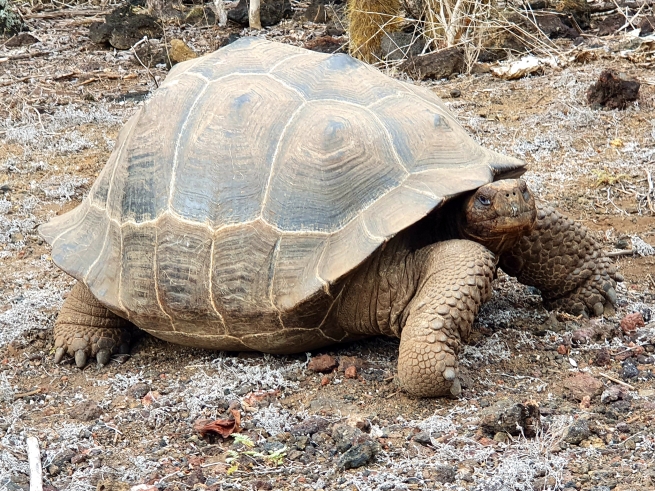
It took us just over an hour to get to the wall itself, you had to walk the last little bit from where you can park the bikes.
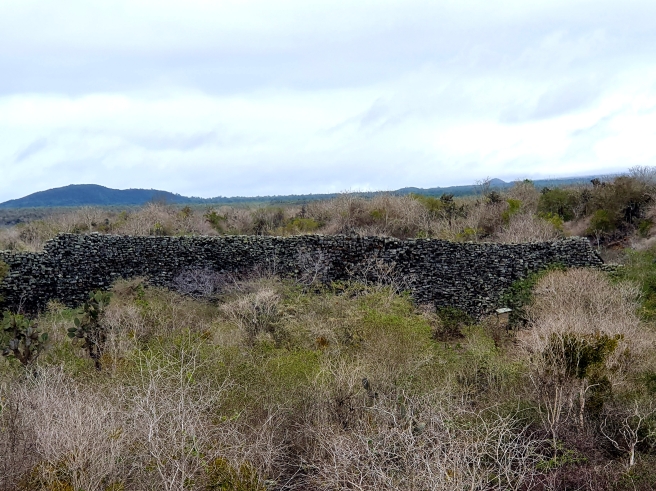
Between 1946 and 1959 there was a penitentiary colony on Isabela. The Galapagos islands were, at this time, just a distant retreat for adventurers, a place for outcasts and political prisoners and common delinquents. The wall of tears is the only remaining evidence of a prison camp where prisoners were often abused by those in power. The construction of the wall was pointless and futile as the wall served no purpose.
The wall is around 100m long and really thick. It is preserved as a monument to remember those who were forced to build it under harsh and abusive conditions.
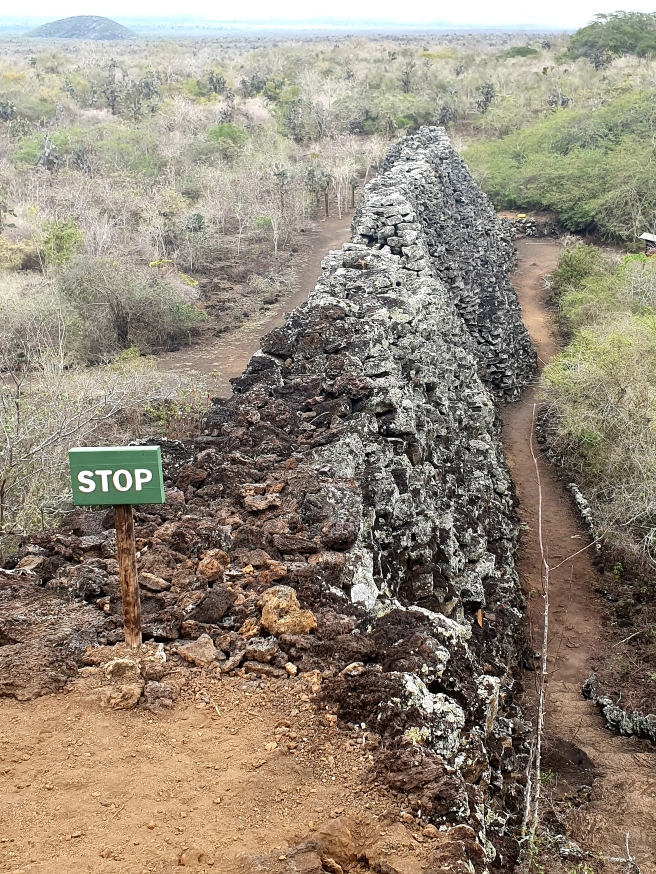
By the side of the wall was a path leading to a couple of viewpoints so we climbed up to have a look at what we could see. You could look back to the main town in Isabela, Puerto Villamil and also out to the island of Floreana.
There used to also be a US radar station based here. During the penal colony times the iron from the radar station was removed and taken by prisoners to Puerto Villamil to build the roof of the church.
You could also see La Tortuga (an island shaped like a turtle) from the viewpoint.
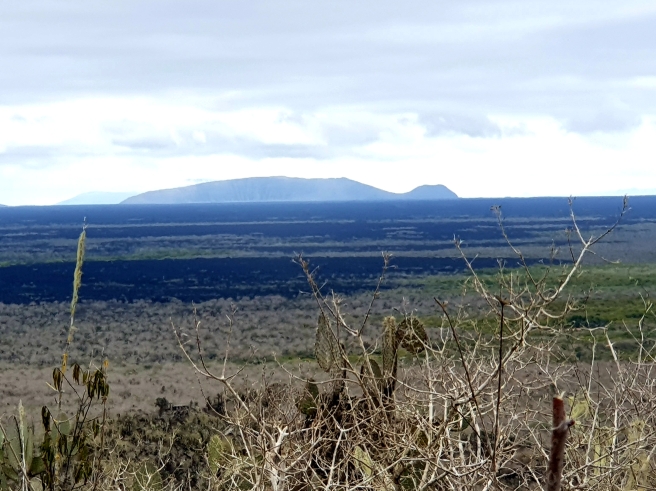
And we also came across a yellow warbler.
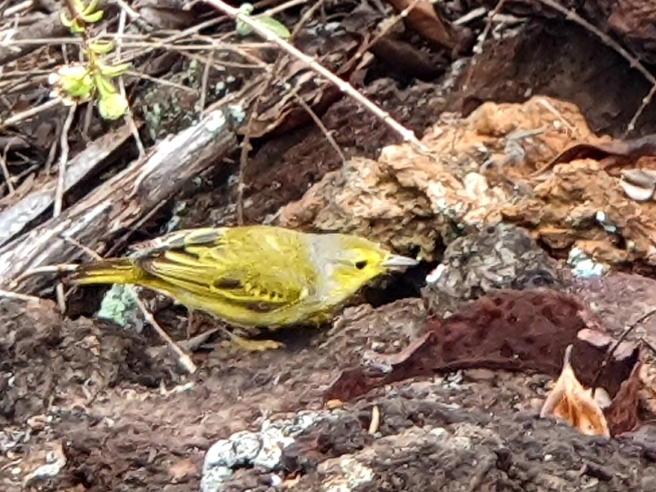
We then walked back down to our bikes and cycled back into town. The way back was much easier as it the majority of it was downhill, although we did have to use the brakes quite a lot, and they were very squeaky. We were back at the bike shop by around 930am so we went and had a coffee before getting changed and waiting to be picked up for the next tour.
We were picked up from the hotel and taken to the port where we met some of the other people who were going on the tour with us – in total there were about 10 of us. The sealions were chilling on the benches.
We headed off in a little panga boat to the lava tunnels. It was absolutely amazing how the captain navigated the boat through the small channels, especially as the water was so shallow. We were allowed to sit on the front of the boat and you could se turtles and other animals and fish in the water.
Cerro Azul volcano erupted in 1998 and these formations were formed from that eruption. The surface of the lava cools the quickest and forms a skin, similar to that on boiled milk, and becomes black and solid. The lava underneath is still hot so it keeps moving and once all the lava has flowed through you are left with chambers which then form tunnels and caves. Over time the rocks erode, break down and collapse.
Before lunch we walked over the lava. We came across a blue footed booby nest with one of the adults sitting on top. The adult was vibrating its throat and it dos this to help it cool down.

The birds incubate immediately after producing their first egg as the heat of the sun would kill the embryo. A second egg is often laid around 5-7 days later. After around 1 month the first egg hatches so the parents feed the newborn hatchling but also continue to incubate the second egg. Obviously the first chick is stronger and is more likely to survive than the second one.
We also came across a family of blue-footed boobies were both the babies had survived. The young boobies, although a similar size to their parents, have white feet and these ones were around 4 months old. The young boobies flap their wings to exercise them and get ready for when they will be able to fly. The feathers of the juvenile boobies are also a different colour to their parents.
Quite often the parents distance themselves from their babies as the juveniles can be extremely demanding. The parents feed their young until they around 10-12 months old.
Just as we were returning to the boat we saw another nest where the female had literally just laid an egg. It was the sweetest thing as both parents were there and they were honking and whistling to each other and rubbing their necks together.
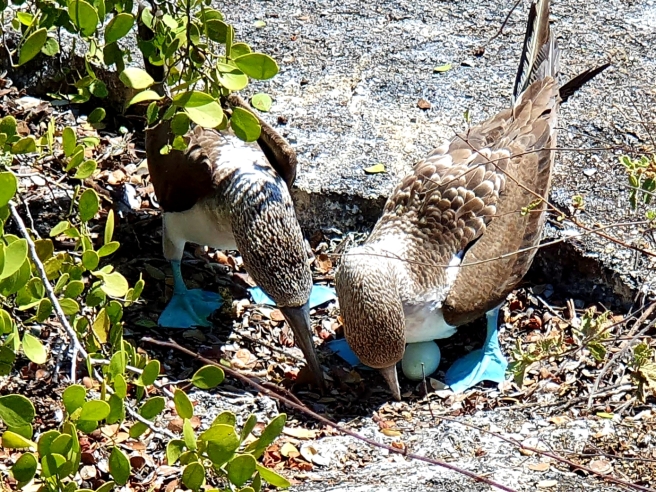
We saw some brown noody terns on the rocks too. These birds always nest in the nooks of the cliffs to protect their eggs from predators.
Once back on the boat we had our packed lunch which was a delicious rice and vegetables dish. We then got changed into our wetsuits so we could go snorkelling.
As soon as I got into the water I saw a turtle and a white tipped shark.
As we snorkelled among the tunnels and channels we saw and swam with a number of turtles and also a lot of different reef fish.
As we swam out into the slightly deeper water the guide who was with us pointed out a seahorse attached to some plants on the sea floor. I must admit there is no way I would have spotted it if he hadn’t have pointed it out. I never thought I would see one of these creatures in real life!
The guide also pointed out a small cave under the rocks where some sharks were congregating.

And then, just as we were about to head to the boat we saw a whole bunch of golden rays – there must have been around 20-30 of them, just swimming together close to the mangroves.

And then we also saw an eagle a ray, which was beautiful and so graceful in the water.
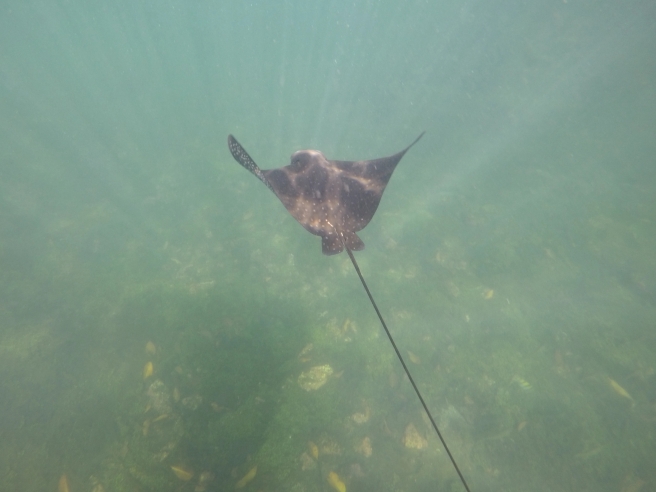
It was an amazing snorkelling session, we saw so much and everything was so close again.
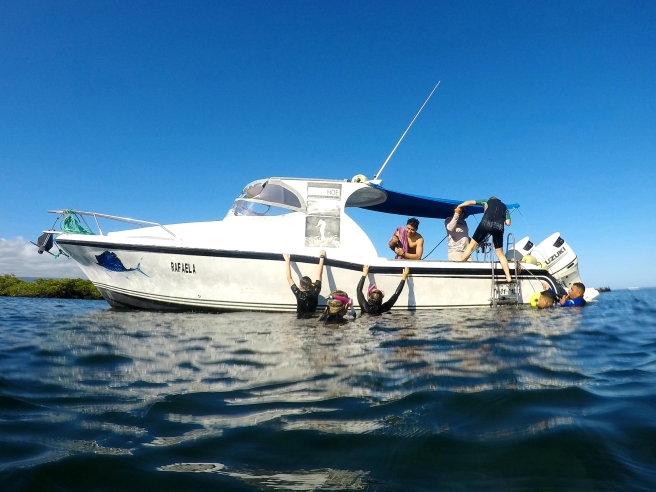
This time we had to get changed on the boat as the journey back to the port was around an hour and we would’ve been too cold keeping our wetsuits on. At the port there were more sealions chilling on the decking.

In the evening we went back to the endemic turtle for dinner as the food was delicious and it looked like their pizza was amazing. So I had pizza and Faye had tacos – both of which were delicious.
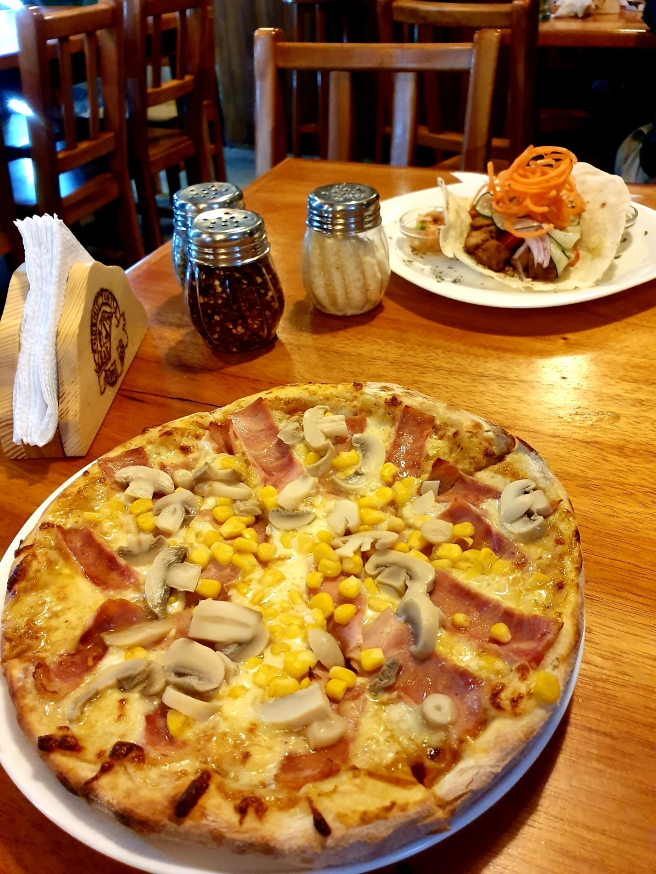
After dinner we visited the local church. Again they seemed to worship the endemic animals as they were painted on the walls and were part of the stained glass windows.
And then it was back to the hotel where we packed some bits and then we were off to bed.































